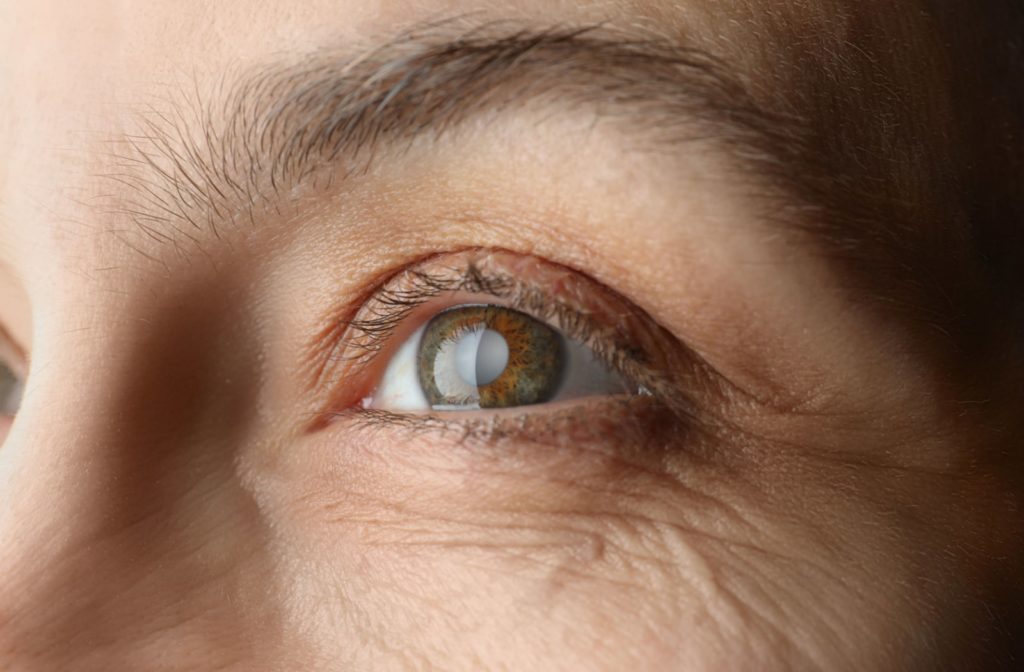Cataracts are a common eye condition among older adults. The clouding of your eye’s natural lens, which is responsible for focusing light on the retina, can cause blurred spots or muted vision. Cataracts are irreversible, but cataract surgery can remove the cloudy lens and insert an artificial lens in its place to restore clear vision.
Getting rid of cataracts with surgery is a straightforward and safe procedure. Cataract surgery is an outpatient procedure that can take under an hour to perform, but the exact amount of time can vary based on your eye health and other factors. After the procedure, you’re sent home with specific instructions and follow-up care steps to support optimal healing.
The doctors at The Eye Care Team can work alongside your surgeon to co-manage your case and support you through the procedure. You’ll be in regular contact with your optometrist for attentive care at every step.
Who Needs Cataract Surgery?
Most cataracts result from natural aging, and by age 80, most people either have cataracts or have had surgery to remove them. However, you can develop cataracts for other reasons, which can influence how your optometry team manages your symptoms.
The risk factors that can increase your likelihood of developing cataracts at an earlier age include:
- Diabetes
- Smoking
- Prolonged UV exposure
- Eye injuries
- High blood pressure
- Previous eye surgery
- Family history
If your cataracts don’t impact your quality of life, you may not be interested in the procedure right away. However, there are some cases where removing cataracts is the best option, including when:
- Your cataracts make it difficult to monitor your eyes for other conditions, such as macular degeneration.
- It’s unsafe for you to work or drive because your vision is obstructed.
- You struggle to cook, garden, climb stairs, read, or watch television.
- Your vision limitations are affecting your level of independence.
We can monitor your eyes for early signs of protein clumping and assess the quality of your natural lens during your annual eye exams. Discuss your vision problems with us and tell your optometrist if you experience common symptoms of cataracts, such as:
- Blurry or cloudy vision
- Difficulty with night vision and low light conditions
- Halos near lights
- Increased light sensitivity
- Faded colors

What Is Cataract Surgery?
Cataract surgery is one of the safest surgical procedures and can dramatically improve visual clarity. The procedure involves removing a natural lens affected by cataracts and replacing it with a new, artificial intraocular lens (IOL).
Different Types of Cataract Surgery
The technique used during the procedure may impact its duration—there are 2 common methods your surgeon may use based on your eyes.
- Phacoemulsification: For this method, your surgeon will make a small incision and use a small ultrasound probe to dissolve the core of the lens. Another probe will suction the broken-down cataracts through the opening, leaving the lens capsule intact.
- Extracapsular surgery: This method may only be used if you have certain eye conditions and involves a larger incision that is made to remove the firm center of the lens. The remaining fragments are removed with suction before a new lens is inserted.
Different Intraocular Lenses
After your natural lens is removed, it’s time for an artificial lens to be inserted. IOLs come in various types and can have focusing power, like corrective lenses, to improve refractive errors, such as myopia, hyperopia, astigmatism, and presbyopia. They’re made of flexible material and are designed to be easy to place and situate in the eye.
Some of the lens types available include:
- Fixed-focus monofocal lenses that provide a single focus strength for distance
- Accommodating-focus monofocal lenses that can respond to the eye to naturally shift focus between distances
- Multifocal lenses with different areas that have distinct focusing strengths
- Toric lenses to correct astigmatism
The Surgical Procedure Step by Step
Cataract surgery is a common and safe procedure. While you may be awake throughout, you’ll be given a numbing agent to decrease discomfort. The procedure will follow a general blueprint that includes:
- Applying numbing drops to your eyes to block sensations
- Using a laser or similar tool to make an incision
- Breaking down and suctioning out your existing lens
- Inserting a new artificial intraocular lens
- Sealing larger incisions if necessary
- Staying under observation for up to 30 minutes to monitor your eye pressure and reaction to the eye drops before you’re released with care instructions
If both eyes are affected by cataracts, your optometry team may decide to split the procedure into 2 separate appointments.
Support for Your Cataract Procedure
Regular eye exams are critical for detecting cataracts early. If your cataracts negatively affect your quality of life and make daily tasks difficult, schedule a visit with The Eye Care Team to discuss your eye health and learn how we can support your vision.



